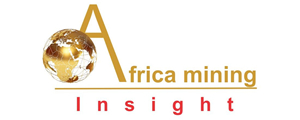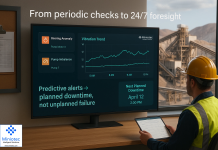“COVID 19 and social distancing will most certainly accelerate the adoption of mobile, online and virtual reality learning – especially in the mining industry”, so says Wilhelm Prinsloo, MD of Simulated Training Solutions (STS3D). STS3D develops virtual reality and 3D animation simulations to address the need for risk and safety management training in the mining industry.
“We specialise in ‘learning from incidents’. We’ve simulated more than 150 incidents for mines ranging from Argentina to Kazakhstan to New Caledonia. We supplement these with safety and health protocols, with interactive geological simulations and with hazard scenes depicting risks in mining – whether underground, on surface operations, or in plants, smelters and ports. This enables us to provide clients with a comprehensive suite of risk management tools – training covering SLAM and TARP assessments, Pre-use Inspections, Planned Task Observations, Permits to Work, Critical Control Management, Fatal Hazard Protocols and Visible Felt Leadership modules.
But we also strive to hero the learner. We use indigenous characters, analogies and storytelling to make the learning engaging. Our team always try to move beyond the typical boring, bulleted power point e-learning which are riddled with jargon and legalese – we make learning interesting by using highly interactive scenarios and choices. We also make our learning easy and safe – we deploy our programmes using the STS3D XRS or Extended Reality System – a web-based learning and content management platform which captures all responses and provides immediate results and reports”.
With a deep understanding not only of computer graphics, VR and gaming to mimic real life working experiences, but also many decades experience of mining conditions and instructional design techniques, the team at STS3D continually breaks new ground. As such, STS3D has pioneered a number of virtual reality training tools for mining – Virtual Blast Walls to teach blasting patterns and techniques; a range of Virtual Mining Environments (hard rock, coal, diamond, massive mining) in which to simulate entry examination and safe declaration techniques to counter geological hazards; and virtual vehicles to teach pre-use inspection, navigation and blind spots. STS3D has also recently developed a life-sized virtual reality CUBE, depicting an electrical substation to teach fault finding techniques, as well as a robotic VR mud gun used in smelters.
“But our biggest challenge was to develop a Virtual Stope for Anglo American Platinum – a tool to ‘advance the blast’- the silver bullet in mining”, says Prinsloo.
The Amandelbult VR STOPE consists of 2,300 cubic feet of training space, surrounded by an immersive 800 square feet rear projection screen – held in place by about 2,000 feet of aluminium tubing; and with one monster PC driving 12 digital projectors and another monitoring 20 state-of-the-art Vicon tracking cameras. All of this is brought to life by over 4,300 feet of electrical and signal cabling.
In the VR STOPE miners learn to mark blasting patterns – accurately; and to time the blast – precisely. They learn how to examine the rock for geological features which could impact the blast, and practice a range of safety techniques – barring, gas monitoring, ventilation and support installation. Most importantly, they experience the impact of detonations, see how the rock fractures in front of their eyes, and grasp the mistakes they’ve made, immediately, and with graphic intensity.
“Using realistic immersive virtual reality training does not only produce recall of knowledge and rules, but learners also sharpen their cognitive skills. They learn to recognise patterns, they practice choosing between alternatives, and they learn to understand ‘cause-and-effect’ by getting immediate feedback on the consequences of their decisions. But even better, with VR you master motor skills – miners build mental muscle memory by repeatedly performing sequential process tasks, carrying out diagnoses, and solving problems. And remember, we do this safely and cheaply – allowing the learners to experiment, to learn from mistakes, to develop self-confidence by pushing boundaries, and to learn through repetition – all in a virtual world, a world you can carry around in a VR head set and set up wherever you have online connection”.
Using artificial intelligence and gamification, STS3D also offers a range of simulation games for risk and supervisory management training. The STS3D SLIMSIM range includes a mining cycle game – teaching supervisors how to plan and schedule, how to allocate resources, how to alleviate constraints, how to eliminate wastages in their processes, and most importantly, how to do proper handovers to optimise cycle management. Other simulation games include how to use survey notes to plan and mine accurately; how to identify and manage hazards; and how to investigate incidents and conduct audits.
For more information, or to arrange for a demo of STS3D’s products, please contact
Johan Bouwer
+27 [0] 12 349 1124






